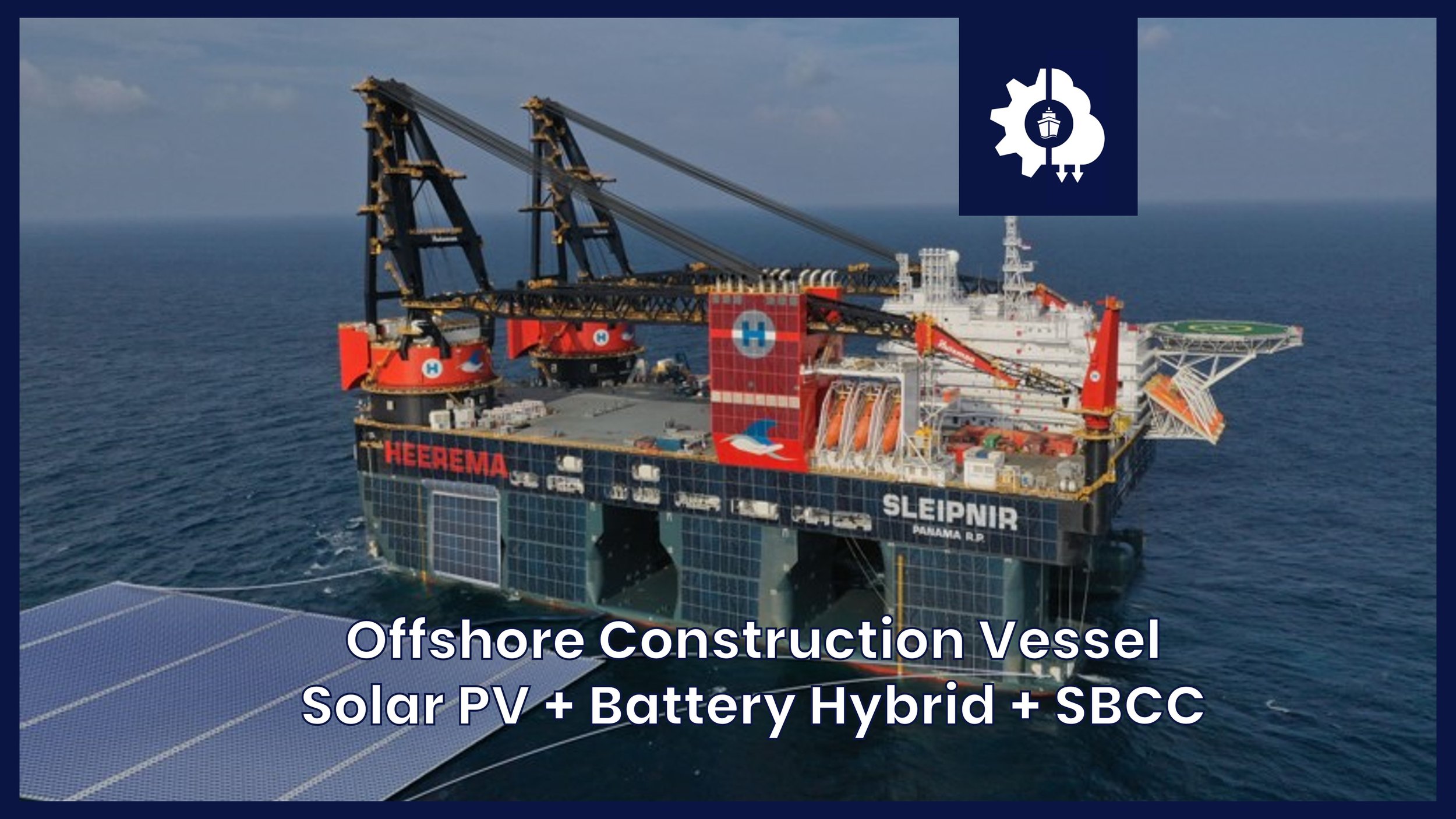How to decarbonize your ship - Hopper Dredger + Methanol
Case study for a trailing hopper suction dredger refitted for methanol
This is a techno-economic case study of a trailing hopper suction dredger that is converted to methanol combustion. This case study is inspired by the amazing work done by Van Oord, who are investing heavily in the decarbonization of their fleet. Generally speaking the conversion to methanol is ‘simple’ when the existing vessel runs on dual-fuel MGO-LNG, but never easy. For these dual fuel engines, Low-Gas Codes already apply, double-walled piping is installed in most cases and stainless steel tanks should be able to accommodate methanol. Newly constructed vessel operating worldwide with 30+ years of service ahead can be expected to oblige with strict IMO regulations on carbon reduction, basically requiring these vessels to be ‘zero-emission ready’.
Case study is ‘Happy Hopper’, a trailing suction hopper dredger operating globally with 14 MW installed engine capacity.
With the given assumptions on emission factors for methanol, 93% CO2 reduction is achieved.
CAPEX for a methanol refit of this size is approximately €6M+, of which roughly €5M is intended for engine refit only.
OPEX will be greatly increased unless methanol price is below €0.50 per kg, or €500 per mT, which is somewhat of a fairy tale (especially ‘green’ methanol made with short cycle carbon).
Use the Decarbonizer to fit the vessel to your needs
Includes a one hour consult to clarify all your questions
Ship type considerations - Trailing Hopper Suction Dredger
Though exempt for many regulations at this point in time, it is expected that many dredging vessels - in particular 5000 GT and above - will be included in IMO regulations, as well as FuelEU and EU ETS (carbon tax in EU). You can expect 20-50% CO2 reduction requirements in the next 15 years, and becoming fully zero emission by 2050. With such high ambitions, a fuel change would almost certainly be necessitated.
Dredgers require a massive amount of energy, especially when in ‘working’ mode. This put serious restrictions on technology options when refitting. Arguably, a battery hybrid energy system might be (greatly) beneficial if large power peaks are encountered, or when pumps/equipment is frequently switched on or off, but this is not the case for the Happy Hopper. You can use the Decarbonizer to determine if this might be beneficial to your vessel.
Technology considerations - Methanol
Methanol is most likely the ‘simplest’ alternative fuel compared to hydrogen and ammonia. With an MDO-LNG dual fuel engine, it is also the least costly to refit in general and it has the best volumetric energy density properties of these fuels. Hence it is preferred from a shipowner’s perspective, as it is least impacting a shipowner’s operations and similar to ‘regular’ fossil fuel in use (arguably easier than LNG). Learn more below.
Get help today
-
Upon purchase of the premium version, the Decarbonizer tool and report are tailor-made to your vessel and accompanied by a one-hour consult to clarify all your questions. You can use this consult to ask all kinds of questions regarding maritime sustainability. You can do this together with your colleagues, and acquire specific details from the Decarbonizer outside of the freemium version scope. These include component costs, fuel and emissions assumptions as well as more detailed design specifications.
-
In the end it is all about the resulting cost impact to your operations. We know how important this is to you. That is why all our tools and calculations are aimed at making you comply with regulations - perhaps a little beyond - while aiming for the lowest cost to make this happen. Our premium reporting and consulting will allow you to get all the details on the CAPEX and OPEX cost in your current and future situation.
-
Click on the “Buy now” button below to purchase product.
Use the Freemium Decarbonizer and fill in as much as you can.
You will receive a preliminary report and an invite for a one hour consult.
During the consult, we will update the report, customize it to your needs and answer all your questions.
At the end of the consult, you have an updated report that satisfies all your needs. If not, you have a money back guarantee!



All about marine methanol, costs, how to store it and how to use it on-board your vessel